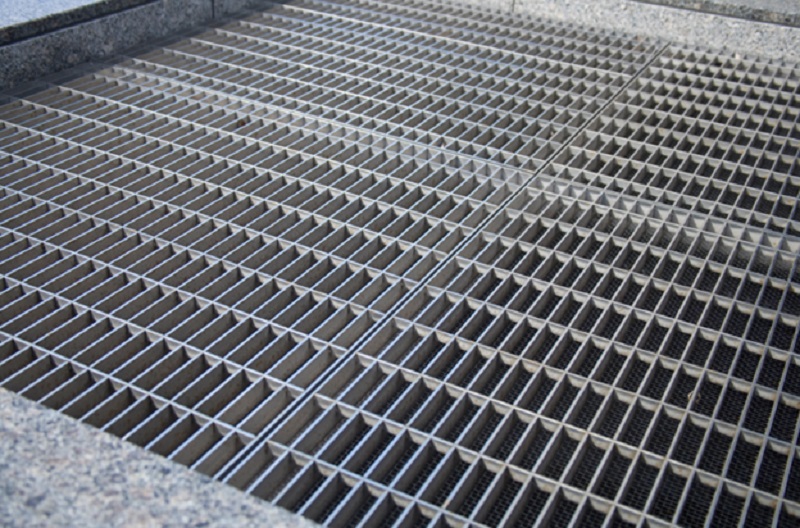
In countless public spaces, industrial zones, and architectural projects, one simple yet powerful component works quietly behind the scenes—welded steel grating. It might not be the first thing anyone notices, but its contribution to the structural integrity and safety of platforms, walkways, and drainage covers is immense. From bustling train stations to modest warehouse floors, its presence ensures stability, ventilation, and secure movement for both people and equipment.
This versatile material has found its way into a wide variety of uses thanks to its robust build and minimal upkeep needs. As urban development expands and safety becomes more paramount in both commercial and industrial settings, steel grating continues to be a preferred solution for engineers and builders alike.
Durable / Reliable / Easy to Maintain
One of the defining characteristics of steel grating lies in its durability. Unlike alternatives that may crack, rot, or warp over time, steel grating resists damage caused by heavy foot traffic, weather exposure, or chemical contact. Its welded joints ensure that each panel holds firm, offering peace of mind in areas where safety is non-negotiable.
Cleaning and maintenance are remarkably simple as well. The open-grid structure prevents the accumulation of debris, while the smooth steel surface can be wiped down or pressure-washed with ease. In high-traffic environments, this translates to lower costs and reduced downtime, allowing operations to run smoothly with minimal disruption.
Versatility in Design and Application
Welded steel grating is not confined to a single design or purpose. Its adaptability makes it useful across numerous sectors, from manufacturing to public infrastructure. It can be laid over drainage systems to allow water to flow freely while preventing unwanted access or debris entry. In construction zones, it acts as a reliable flooring option for scaffolding or elevated workspaces, providing workers with solid footing and enhanced visibility.
Even outside of industry, it appears in parks, pedestrian bridges, and urban landscaping projects. Its minimalist appearance blends well with both functional and aesthetic design plans, making it suitable for both purely practical and visually driven applications.
Safety and Airflow / Visibility and Traction
Public and industrial environments must meet specific safety standards to protect workers and visitors. Welded steel grating naturally offers several advantages in this regard. The open pattern improves ventilation in enclosed areas, reducing the risk of overheating machinery or stale air in confined spaces. It also supports natural light flow and drainage, which minimises the chance of water pooling and slipperiness.
Moreover, the texture of the grating improves traction, especially when combined with anti-slip treatments. Whether installed indoors or out, it ensures that people can move securely even during rain or industrial spills. The grating’s strength also means it won’t bend or shift under heavy loads, preserving the integrity of stair treads, catwalks, or service platforms over time.
Cost-Effective / Long-Term Value
While initial material costs might be slightly higher than those of plastic or wooden alternatives, the long-term savings that steel grating offers are significant. Its long lifespan means fewer replacements and repairs, which directly translates into reduced operational budgets. Additionally, its recyclability makes it an environmentally conscious choice for organisations striving to reduce waste and use sustainable resources.
Its installation is straightforward, and many types come prefabricated to standard sizes, allowing quick placement without extensive customisation. For larger-scale projects, this ease of use helps keep construction timelines on track, contributing to smoother rollouts and improved project management.
Timeless Efficiency in Modern Environments
Every element in a built environment serves a purpose, and welded steel grating exemplifies how form and function can work hand-in-hand. It provides a strong base, facilitates movement, supports safety, and remains consistent in performance despite the passage of time and weathering of conditions. In environments where consistency and reliability matter, it remains a silent hero beneath our feet.
Whether seen in a quiet alley or beneath busy assembly lines, it endures as a smart choice for those seeking straightforward solutions without sacrificing quality. As infrastructure continues to evolve, solutions like these prove their worth again and again, not by standing out visually, but by standing firm in purpose.
Conclusion:
In conclusion, welded steel grating serves as an indispensable component in modern construction and public works. Its strength, adaptability, and low-maintenance nature make it a smart investment for projects large and small. Its role may often be overlooked, but its presence is essential, quietly supporting structures, ensuring safety, and simplifying maintenance for years to come.




